In the ever-evolving world of kitchen appliances, the introduction of steak machines has sparked a revolution in culinary experiences. These innovative devices are not just a simple addition to the kitchen arsenal; they represent a shift in how we perceive and prepare our favorite cuts of meat. As the demand for these machines grows, so does the need to understand the nuances of the market, from the latest technological advancements to consumer preferences and the regulatory landscapes they must navigate. This article delves into the intricacies of steak machines, exploring their impact on both the consumer and the industry as a whole.
The Rising Trend of Steak Machines in the Western Markets
In recent years, a fascinating shift has been taking place in the culinary landscape of Western countries. Steak machines, once a niche product, have now surged in popularity, becoming a must-have kitchen gadget for many food enthusiasts and professional chefs alike. This article delves into the reasons behind this growing trend and explores how steak machines are redefining the way we cook and enjoy steak.
Firstly, the convenience offered by steak machines is hard to overlook. These innovative devices are designed to deliver restaurant-quality steaks at home, with minimal effort. The ability to have a perfectly grilled steak without the need for constant monitoring or flipping is a game-changer for busy individuals and families. The ease of use has made steak machines an appealing option for those who may not have the time or skill to cook steaks on a traditional grill.
Secondly, the culinary experience that steak machines provide is unparalleled. These machines often come with adjustable temperature settings and precise cooking controls, allowing users to achieve the perfect doneness every time. Whether you prefer a rare, medium, or well-done steak, these devices ensure that the final product is cooked to perfection. The consistent and even heat distribution minimizes the risk of overcooking or burning, which is a common issue when cooking steaks on a grill.
Moreover, the health benefits associated with steak machines are becoming increasingly apparent. Grilling steaks on a steak machine can reduce the amount of fat and cholesterol compared to traditional grilling methods. The controlled cooking process helps to lock in the steak’s natural juices, resulting in a succulent and flavorful meal that is both healthy and satisfying. This aspect has resonated with health-conscious consumers who are looking for ways to incorporate more nutritious meals into their diets.
The technological advancements in steak machines have also played a significant role in their rising popularity. Modern steak machines often come with features such as non-stick surfaces, which make cleaning a breeze. They also typically include digital interfaces that allow users to set specific cooking times and temperatures, ensuring precision and consistency. The integration of smart technology, such as Bluetooth connectivity, has even allowed users to control their steak machines remotely, adding a layer of convenience that was previously unimaginable.
The impact of steak machines on the culinary industry cannot be overstated. Chefs and restaurateurs are increasingly incorporating these devices into their kitchens, not only to streamline the cooking process but also to offer a unique dining experience. Steak machines are being used to create unique steak dishes that would be difficult or impossible to achieve with traditional grilling methods. This has opened up new possibilities for chefs to experiment with flavors and textures, pushing the boundaries of steak preparation.
In terms of market trends, the demand for steak machines has been on the rise, with sales figures reflecting this growth. According to recent industry reports, the global steak machine market is expected to witness significant growth over the next few years. This upward trajectory is being driven by a combination of factors, including the increasing consumer interest in home cooking gadgets, the desire for convenience, and the growing health consciousness among consumers.
The entry of new players into the steak machine market has also contributed to its growth. As more companies recognize the potential of this niche, they are investing in research and development to bring innovative and affordable steak machines to the market. This competition has not only led to improvements in the quality and functionality of steak machines but has also driven down prices, making them more accessible to a wider audience.
In conclusion, the rising trend of steak machines in Western markets is a testament to the evolving preferences and lifestyles of consumers. These devices are not just a tool for cooking; they are a symbol of innovation and convenience that has found its place in modern kitchens. As the market continues to grow, it is likely that steak machines will become an integral part of the culinary landscape, offering both home cooks and professional chefs new ways to savor the flavors of perfectly cooked steak.
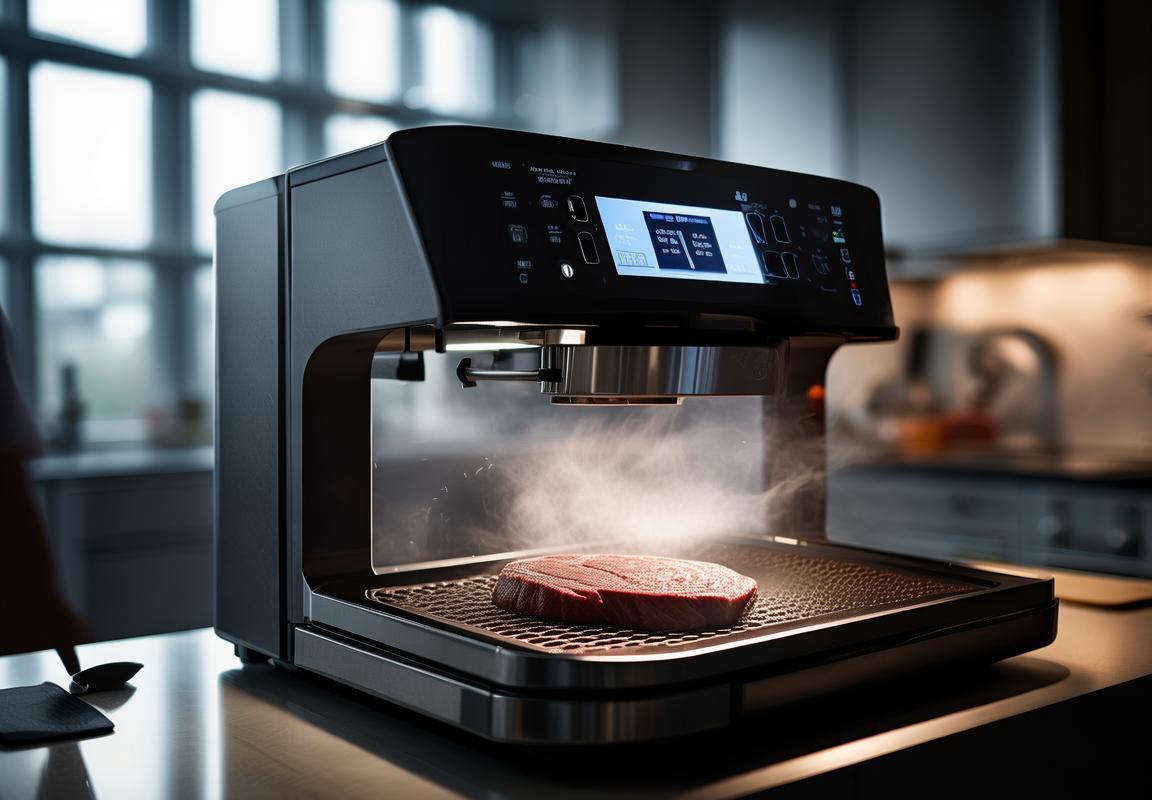
Understanding GOST Standards: A Key to European厨电 Compliance
GOST, or the State Standardization System of the Russian Federation, plays a pivotal role in ensuring product compliance within the European market, especially for kitchen appliances. This comprehensive set of standards is not just a regulatory framework; it’s a cornerstone for quality assurance and consumer safety. Here’s a deeper dive into what GOST standards entail and why they are crucial for European compliance.
The GOST system encompasses a vast array of guidelines, from technical specifications to safety regulations, all designed to maintain uniformity and quality across various industries, including the kitchen appliance sector. For European manufacturers looking to enter the Russian market or those aiming for compliance across the broader European Union, understanding GOST is non-negotiable.
One of the most significant aspects of GOST standards is their focus on safety. These standards dictate stringent safety protocols that appliances must adhere to, ensuring that they do not pose any risk to consumers. This includes electrical safety, thermal protection, and mechanical stability, among others. For European, which are often known for their advanced technology, meeting these safety requirements can be challenging but is essential for market entry.
Moreover, GOST standards cover a wide range of specifications, from the materials used in the construction of appliances to the energy efficiency ratings. This means that European companies must not only ensure their products are safe but also that they meet the specific requirements set forth by GOST for materials, design, and performance.
Energy efficiency is a growing concern worldwide, and GOST standards reflect this trend by including detailed guidelines on energy consumption. European that want to be considered eco-friendly and cost-effective in the European market must align with these energy efficiency criteria, which can vary significantly from the standards set by the European Union.
The certification process for GOST compliance is rigorous and requires thorough documentation. European manufacturers must provide detailed technical files, including product drawings, manufacturing processes, and test reports. This process is often time-consuming and requires a deep understanding of both the product and the standards it must meet.
Another important aspect of GOST standards is the labeling requirements. Appliances must carry specific labels that provide information about their compliance with GOST. This not only serves as a mark of quality but also helps consumers make informed decisions when purchasing kitchen appliances.
For European companies, the translation of technical documentation into Russian is often a challenge. GOST standards are typically in Russian, and any documentation provided must be accurately translated to avoid misunderstandings and ensure compliance.
In addition to safety and efficiency, GOST standards also address ergonomic design and usability. This means that European not only need to be safe and energy-efficient but also user-friendly, adhering to guidelines that ensure they are easy to operate and maintain.
The regulatory landscape is constantly evolving, and GOST standards are regularly updated to reflect new technologies and consumer needs. European companies must stay abreast of these changes to remain compliant and competitive in the market.
In conclusion, GOST standards are a complex yet crucial aspect of European compliance, particularly in the Russian market. They encompass a broad spectrum of requirements, from safety and energy efficiency to labeling and usability. Navigating this regulatory landscape successfully requires a thorough understanding of GOST standards, a commitment to quality, and the ability to adapt to evolving regulations. For European manufacturers, achieving GOST compliance is not just about meeting regulatory demands; it’s about ensuring that their products are safe, efficient, and user-friendly, ultimately enhancing their marketability in the European Union.

Why Steak Machines Are a Game-Changer in the Kitchen
In the ever-evolving landscape of kitchen technology, steak machines have emerged as a revolutionary tool that’s changing the way we approach cooking at home. These innovative devices are not just a gadget; they are a game-changer that brings professional-level steak preparation into the average household. Let’s delve into why these machines have become such a pivotal addition to modern kitchens.
Gone are the days when cooking a perfect steak was left to the skill and experience of a seasoned chef. Steak machines offer precision and consistency that even the most adept home cooks might struggle to achieve. They control temperature, timing, and pressure, ensuring that every steak is cooked to the perfect level of doneness. This level of control is crucial for those who desire a consistent culinary experience every time they fire up the stove.
The technology behind steak machines is sophisticated. These devices often come with adjustable settings that cater to various steak preferences—be it rare, medium, or well-done. The precise temperature control is particularly impressive, as it allows the user to achieve the perfect sear on the outside while ensuring the inside is cooked to their liking. This level of control is not just for steak enthusiasts; it’s for anyone who wants to elevate their home cooking to a new level.
One of the standout features of steak machines is their ability to simulate the high-heat grilling environment. Many models can reach and maintain temperatures that would typically only be found in a commercial grill. This means that whether you have a backyard barbecue or a tiny apartment kitchen, you can now enjoy the flavor of a perfectly grilled steak, no matter the size of your cooking space.
Beyond the technical aspects, steak machines also make cooking more accessible. They reduce the need for constant monitoring, which is often required when cooking steaks on a grill or in a pan. With a steak machine, you can set it and forget it, allowing you to multitask or simply enjoy the process of cooking. This convenience is especially appealing to busy families or individuals who value efficiency in their kitchen routines.
Another significant advantage of steak machines is their ability to enhance the flavor of the meat. By controlling the cooking environment, these machines can prevent overcooking, which can lead to a loss of juiciness and flavor. The even distribution of heat ensures that the steak is cooked uniformly, which means more of the natural flavors are preserved. This is a win for both the taste and the nutritional value of the steak.
The rise of steak machines has also sparked a renewed interest in steak preparation as an art form. Chefs and home cooks alike are experimenting with different cuts of meat and cooking techniques, thanks to the reliability and consistency that these machines provide. This has led to a surge in creativity in the kitchen, with innovative recipes and flavor combinations being tested and enjoyed by consumers.
Furthermore, steak machines are a testament to the power of technology in making everyday tasks easier. As we move towards a more tech-savvy world, appliances that can simplify complex processes are becoming increasingly popular. Steak machines embody this trend, offering a fusion of technology and culinary expertise that is both fascinating and practical.
From a practical standpoint, steak machines are also a boon for those with dietary restrictions or allergies. The controlled cooking environment minimizes the risk of cross-contamination, making these machines suitable for cooking multiple types of meat or for those who require a specific cooking method to avoid allergens.
In conclusion, steak machines have become a game-changer in the kitchen by providing unparalleled control over the cooking process, enhancing flavor, and making steak preparation accessible to everyone. As these devices continue to evolve, they will likely become even more integrated into the daily cooking routines of households around the world, transforming the way we think about and enjoy our steaks.
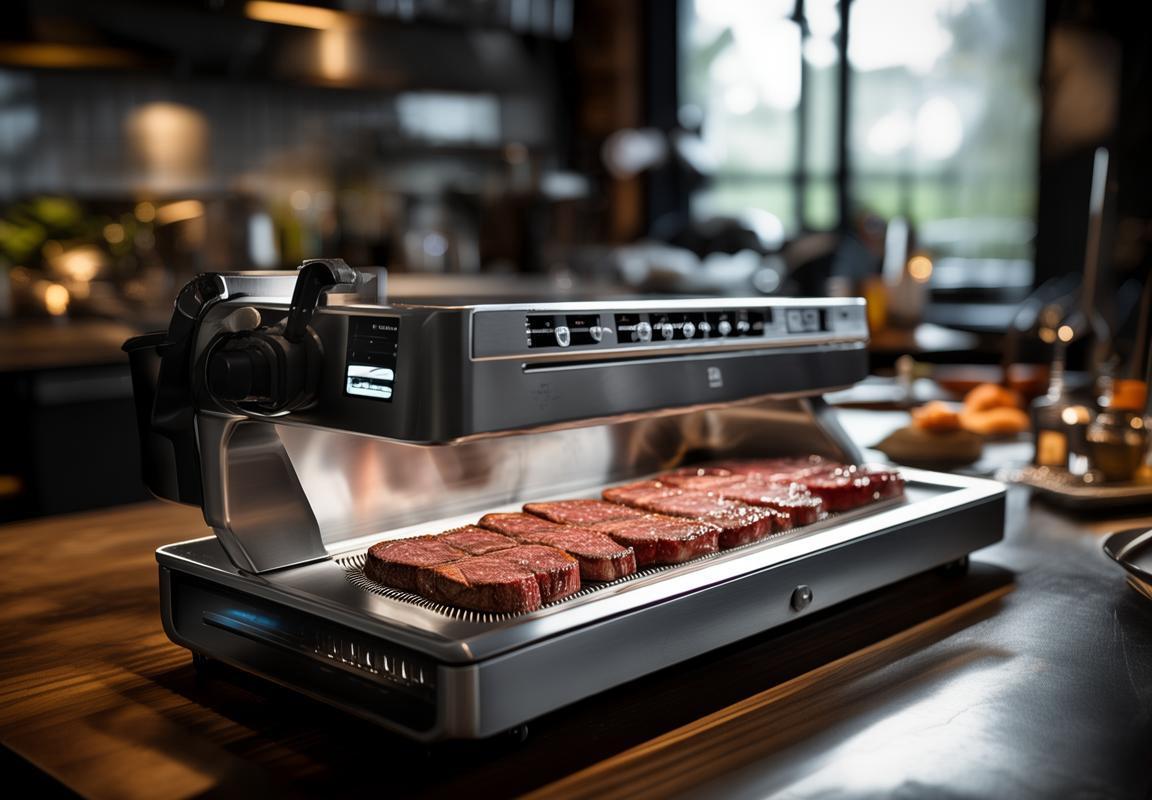
Market Dynamics: Ongoing Developments in the US and European厨电 Sectors
The kitchen, once a domain for culinary art and handiwork, is now rapidly transforming with the integration of cutting-edge technology. The U.S. and European sectors are at the forefront of this evolution, driven by consumer demands for efficiency, convenience, and innovation. Let’s delve into the ongoing developments reshaping these markets.
Technological Integration continues to blur the lines between traditional kitchen appliances and modern electronics. Smart appliances that can be controlled via smartphones and IoT (Internet of Things) devices are becoming more common. These interconnected devices not only provide convenience but also offer insights into usage patterns, leading to more energy-efficient operations.
Eco-friendly Design is gaining traction as sustainability becomes a top priority for consumers. Companies in the U.S. and Europe are increasingly focusing on creating products that are energy-efficient and made from recycled materials. The goal is to minimize the carbon footprint and encourage a circular economy, where products are designed to be durable and easily recycled at the end of their life cycle.
Artisanal Trends are influencing the market as consumers seek out high-quality, gourmet experiences at home. There’s a growing demand for precision cooking tools that mimic the techniques of professional chefs, such as sous-vide machines and vacuum sealers. These devices allow home cooks to achieve restaurant-quality results without the need for professional training.
Health and Safety Concerns are also driving the development of new products. Smart ovens with temperature controls and safety features are becoming more popular, reducing the risk of kitchen fires and foodborne illnesses. The incorporation of air filtration systems in cooktops and hoods is another example, providing healthier cooking environments.
Customization and Personalization are becoming more prevalent in the industry. Manufacturers are offering a wide range of configurations and finishes to cater to individual tastes and kitchen aesthetics. From sleek stainless steel to rustic brick finishes, the options are nearly limitless, allowing homeowners to create a unique kitchen space that reflects their personal style.
Digital Kitchen Platforms are emerging as a new trend, offering comprehensive solutions for kitchen management. These platforms integrate various devices, allowing users to control cooking times, monitor food safety, and even manage their grocery lists. The aim is to provide a seamless cooking experience that is as easy as pressing a button.
Subscription-Based Models are gaining popularity, especially in the U.S. This approach allows consumers to subscribe to a range of products, including high-end appliances, small kitchen gadgets, and even personalized recipes. It offers the flexibility to try new products without the commitment of a full purchase and can lead to better cost management.
Globalization has also played a significant role in the development of the sectors. Companies are looking beyond their domestic markets to collaborate with international brands and gain insights into diverse consumer needs. This has led to a proliferation of international patents and a global standardization of features, making it easier for consumers to use products across different countries.
Regulatory Compliance remains a cornerstone of the industry. Both the U.S. and European markets are subject to strict regulations regarding energy efficiency, safety, and emissions. As such, manufacturers must invest in research and development to ensure their products meet these stringent requirements.
Finally, the rise of e-commerce has had a profound impact on the sector. Online sales are becoming a significant portion of total revenue, with many consumers preferring the convenience and choice offered by online retailers. This shift is forcing companies to reevaluate their marketing strategies and invest in digital transformation.
In conclusion, the U.S. and European sectors are witnessing a dynamic period of growth and innovation. From eco-friendly designs to smart kitchen platforms, the market is evolving rapidly, offering consumers an ever-wider array of choices to enhance their culinary experiences at home.

Innovative Features and User Preferences in Steak Cooking Technology
In recent years, the evolution of steak cooking technology has introduced a plethora of innovative features that have significantly reshaped user preferences. From precision control to health-conscious cooking, here’s a delve into the latest advancements that have steak enthusiasts and home chefs rethinking their grilling methods.
Smart Sensors and Temperature ControlModern steak machines often come equipped with smart sensors that monitor the internal temperature of the meat. This precise control allows for perfectly cooked steaks every time, ensuring that the desired level of doneness is achieved without overcooking or undercooking. Users appreciate this level of technology as it takes the guesswork out of cooking and guarantees a consistent outcome.
Variable Cooking SettingsThe ability to adjust cooking settings to different steak types and individual preferences is a game-changer. Many steak machines now offer multiple heat settings, from searing high temperatures to slow-cooking at lower settings. This versatility caters to a wide range of tastes, from those who prefer a rare steak to those who like their steaks well-done.
Non-Stick Coatings and Easy Clean-UpOne of the biggest turn-offs for many when it comes to cooking steaks is the cleanup process. Non-stick coatings on steak machines have made cooking and cleaning a breeze. Users no longer have to worry about the hassle of scraping off stuck-on bits of meat or the mess that can occur when cooking on traditional pans. This feature is particularly appealing to those who prioritize convenience.
Healthy Cooking OptionsAs health consciousness grows, so does the demand for healthier cooking methods. Steak machines often offer options like air frying or grilling with minimal oil. These healthier alternatives allow users to enjoy their steaks without the guilt, as they reduce the fat content compared to traditional frying methods.
Programmable Cooking TimersFor those who lead busy lives, programmable cooking timers are a godsend. Steak machines with this feature allow users to set the exact time and temperature for their steak, even if they’re not home at the time of cooking. This means users can come home to a steak that’s perfectly cooked, without having to monitor the machine throughout the entire process.
Interactive Guides and Digital DisplaysMany steak machines now come with interactive guides and digital displays that provide step-by-step instructions. Users can follow a recipe directly on the machine, ensuring they achieve the perfect steak every time. These guides often include a variety of recipes, allowing users to experiment with different marinades and cooking techniques.
Portability and Compact DesignFor those with limited kitchen space or who enjoy outdoor cooking, the portability and compact design of modern steak machines are a significant draw. These machines are often lightweight and can be stored easily, making them a practical choice for anyone looking to add a high-quality cooking experience to their home or camping gear.
Customizable Grates and InsertsUsers who enjoy customizing their cooking experience will appreciate steak machines that offer interchangeable grates and inserts. These accessories can alter the cooking surface, allowing for different textures and styles of cooking, such as smoking or basting.
Advanced Safety FeaturesSafety is always a top concern, and steak machines have responded with a variety of safety features. From automatic shut-off to cool-touch handles, these innovations protect users from potential accidents. The peace of mind that comes with knowing your cooking appliance is safe is a significant user preference.
Sustainability and Eco-Friendly OptionsIn an era where sustainability is paramount, some steak machines are designed with eco-friendly materials and energy-efficient features. These machines not only enhance the cooking experience but also align with users’ values of reducing their carbon footprint.
Community and Social SharingFinally, the rise of steak machines has also led to a community of users who share recipes, tips, and experiences. Many machines come with built-in social sharing capabilities, allowing users to post their achievements on social media. This aspect of steak cooking technology has turned the kitchen into a place for social connection and culinary exploration.
In conclusion, the innovative features of steak cooking technology have not only changed how we cook but also what we expect from our kitchen appliances. Users are increasingly looking for precision, health, convenience, and personalization in their steak cooking experience, and the latest technology is delivering just that.
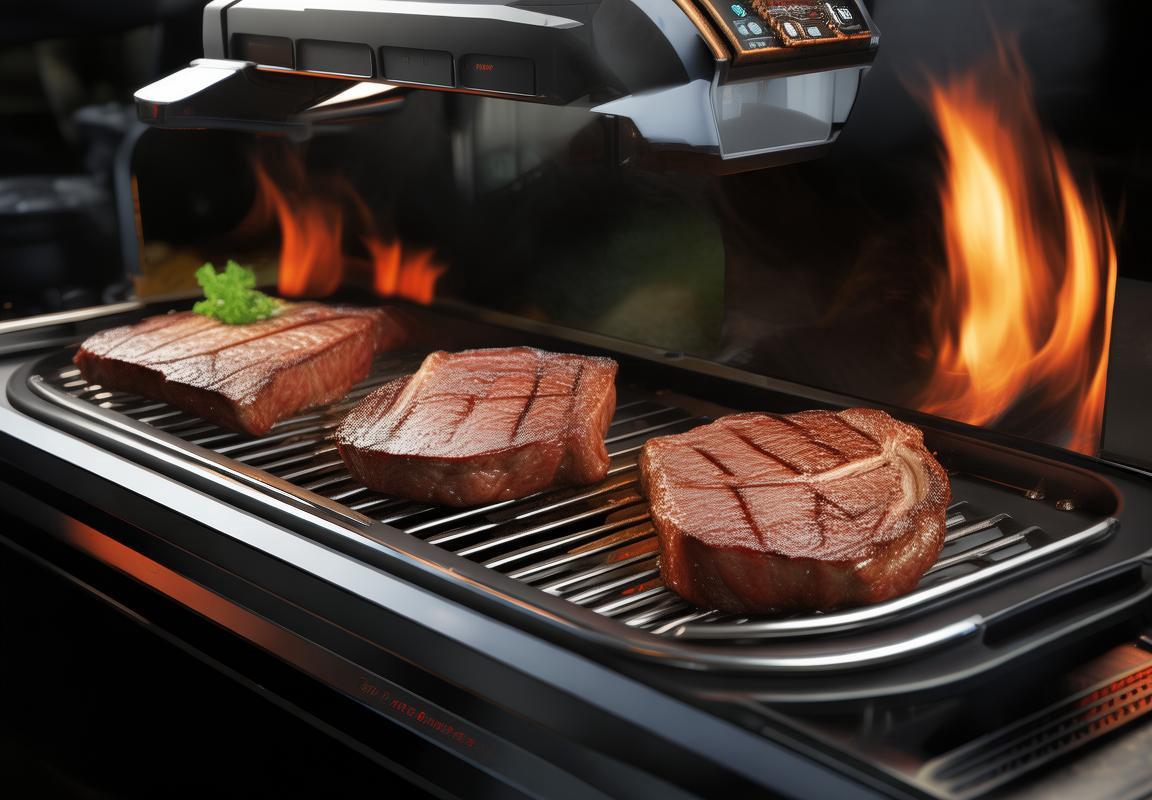
Consumer Insights: The Steak Machine Market from a Customer’s Perspective
Steak machines have become a focal point for consumers looking to elevate their culinary experience at home. From the convenience of precise cooking to the satisfaction of a perfectly seared steak, here’s a closer look at what consumers are saying about the steak machine market from their own perspectives.
Consumers appreciate the convenience that steak machines offer. The ability to achieve restaurant-quality results with minimal effort is a major draw. Many users have noted how easy it is to set the temperature and time, compared to the guesswork involved in cooking a steak on the stove or grill. The streamlined process saves time, allowing for a more relaxed cooking experience.
The consistent results that steak machines provide are another talking point. Users have reported that these machines deliver the same high-quality steak every time, regardless of their own cooking skills. This reliability is a significant advantage for those who might be wary of inconsistent outcomes from traditional cooking methods.
Functionality and versatility are key features that consumers are raving about. Modern steak machines often come with a variety of settings to cater to different steak preferences, from rare to well-done. Some models even allow for customizable cooking programs, which means users can experiment with different cooking times and temperatures to find their perfect steak. This level of control is something that traditional cooking methods simply can’t match.
Ease of cleaning is a critical factor for many customers. The non-stick surfaces and removable parts of steak machines make them much simpler to clean than traditional cookware. Consumers have noted that the cleanup process is quicker and more straightforward, which is a major plus for those who prefer not to spend extra time post-cooking.
Portability and space-saving design are also highly valued. Many consumers live in apartments or homes with limited kitchen space, so the compact nature of steak machines is a significant benefit. Users have praised the ability to store these devices away easily when not in use, which helps maintain a clutter-free kitchen.
Safety features are not to be overlooked. Steak machines often include safety locks and automatic shut-off functions that prevent overcooking and reduce the risk of burns. This added layer of security has been well-received by consumers, particularly those with children or those who are more prone to accidents in the kitchen.
The cost-effectiveness of steak machines is another point of interest. While they can be an investment, many consumers argue that the convenience and consistent quality they provide make them worth the price. Users have noted that the money saved from not needing to dine out as often, coupled with the reduced risk of food waste from overcooked steaks, can offset the initial cost over time.
Customers also appreciate the innovation in steak cooking technology. Features like integrated temperature probes that give real-time feedback on the steak’s internal temperature are seen as a leap forward in home cooking technology. This technology not only ensures the perfect steak but also educates users on the science behind meat cooking, which can be a point of interest for food enthusiasts.
The integration of steak machines into meal preparation routines has been another topic of discussion. Users are finding new ways to incorporate these devices into their cooking, from making steak sandwiches and wraps to using the machine for other proteins like fish and chicken. The versatility in application is opening up new culinary possibilities for consumers.
Lastly, the sense of community and support that has formed around steak machine users is noteworthy. Online forums and social media groups are filled with discussions about tips, recipes, and the latest models. This collective sharing of experiences has fostered a loyal customer base that is eager to explore and share their love for steak machines.
The steak machine market, from a customer’s perspective, is marked by a strong sense of satisfaction with the product’s performance, convenience, and innovation. As these devices continue to evolve, consumers are excited to see what new features and capabilities will be introduced, further enhancing the home cooking experience.

Comparative Analysis: Steak Machines vs. Traditional Cooking Methods
Steak machines have revolutionized the way we cook at home, offering a level of precision and consistency that was once only achievable in professional kitchens. To understand the impact of these innovative cooking devices, let’s delve into a comparative analysis of steak machines versus traditional cooking methods.
Precision and ConsistencyOne of the standout features of steak machines is their ability to maintain a consistent temperature throughout the cooking process. By using advanced heating elements and temperature sensors, these machines ensure that every steak is cooked to the desired level of doneness, from rare to well-done. Traditional methods, such as grilling or pan-searing, rely heavily on the cook’s skill and the fluctuating heat of the grill or stove, making it challenging to achieve such precision.
Ease of UseSteak machines are designed with user-friendliness in mind. With simple controls and clear instructions, even the most inexperienced chefs can achieve professional-quality results. In contrast, traditional methods like sous-vide cooking, which requires vacuum-sealing and precise temperature control, can be quite complex and time-consuming for the average home cook.
Cooking Time and EfficiencySteak machines often offer a more efficient cooking experience. Many models can cook a steak in a fraction of the time it would take on a grill or in a pan. This is due to their ability to rapidly raise and maintain the temperature, ensuring that the steak cooks evenly without overcooking the outer layers. Traditional cooking methods can be slower, especially when it comes to achieving a perfect medium-rare steak, which requires careful monitoring and frequent flipping.
VersatilityWhile traditional cooking methods have their own charm and can produce a variety of textures and flavors, steak machines often provide a more versatile cooking experience. Some models come with adjustable settings for different types of steaks, from thin cuts to thick porterhouses, and even for different cooking temperatures. This allows users to experiment with different cooking styles without the need for multiple cooking utensils or techniques.
Health and SafetyThe use of steak machines can also contribute to a healthier cooking experience. These machines often have non-stick surfaces that reduce the need for excessive oil, which can cut down on the amount of fat and calories in the final dish. Additionally, the controlled cooking environment minimizes the risk of foodborne illnesses, as the precise temperature prevents the growth of harmful bacteria.
Cooking FlavorsDespite the precision and efficiency of steak machines, many traditionalists argue that the flavors produced by these devices can’t match those achieved through classic cooking methods. The searing heat of a grill or the sizzle of a steak in a hot pan can impart unique flavors and textures that steak machines might struggle to replicate. However, newer models are incorporating features like adjustable searing functions and steam injection to enhance flavor and create a more authentic steak experience.
Maintenance and CleanupWhen it comes to maintenance and cleanup, steak machines have a clear advantage. The non-stick surfaces and often removable cooking plates make it easier to clean than a grill or a pan that has been used for searing. Traditional methods can leave behind stubborn residue that requires more effort to clean, not to mention the potential for food to stick to the surface, leading to a less appetizing final product.
Cost and AccessibilityThe cost of steak machines can vary widely, from budget-friendly models to high-end, professional-grade devices. While some may be an investment, they offer a cost-effective alternative to frequent restaurant visits for those who enjoy cooking steaks at home. Traditional cooking methods can be quite affordable, but they may require additional equipment, such as a grill or a high-quality pan, which can add to the overall cost.
In conclusion, steak machines offer a range of benefits that make them a compelling choice for steak lovers who want to cook at home. Their precision, ease of use, efficiency, and health benefits make them a game-changer in the kitchen. However, the debate between steak machines and traditional cooking methods is far from over, as each has its own set of advantages and drawbacks. Whether you prefer the convenience of a steak machine or the artisanal touch of traditional methods, the choice ultimately comes down to personal preference and the type of steak experience you’re seeking.
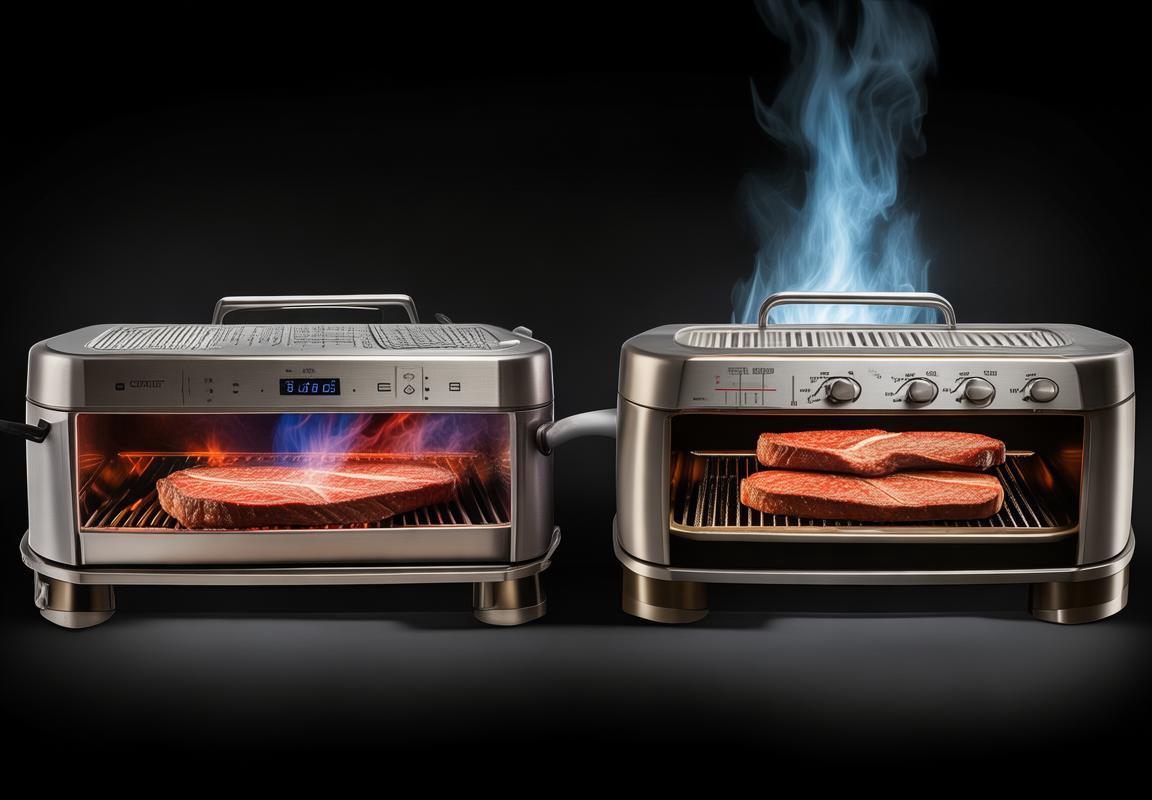
Regulatory Challenges and GOST Certification Process
Understanding the intricacies of navigating the regulatory landscape is crucial for any product entering a new market, especially when it comes to kitchen appliances. The GOST certification process, a standard in the European Union, presents a unique set of challenges for companies looking to introduce steak machines. Here’s a closer look at the regulatory hurdles and the certification process:
The GOST (Gosudarstvenny Standart) system is a set of standards that are mandatory for all products sold in Russia and are often followed in other Eastern European countries due to the historical ties and economic integration. For steak machines, which are a relatively new entry into the European market, complying with GOST standards can be quite the task.
One of the primary challenges is the comprehensive nature of GOST standards. They encompass not only the safety and performance of the product but also its environmental impact and even the labeling requirements. This means that a steak machine manufacturer must ensure that every aspect of their product adheres to these stringent regulations.
Safety is paramount in the GOST certification process. The standards demand that steak machines are designed to prevent electrical hazards, overheating, and any potential fire risks. This involves rigorous testing for electrical insulation, heat dissipation, and structural integrity. The certification authorities will thoroughly inspect the machine’s design and materials to ensure they meet these safety criteria.
Environmental concerns are also a significant part of the GOST certification. The standards require that products are environmentally friendly, which means they must be made from recyclable materials and designed for minimal waste. Steak machines, which are often made of metal and plastic, must undergo assessments to ensure they meet these ecological requirements.
Labeling is another area that can be quite challenging. GOST standards dictate specific information that must be clearly displayed on the product, such as the manufacturer’s name, model number, voltage, and compliance with safety and environmental regulations. Ensuring that all these details are accurately and legibly printed on the product can be a meticulous process.
The certification process itself is a multi-step endeavor. It begins with a thorough documentation review, where the manufacturer must provide detailed technical specifications, manufacturing processes, and safety data sheets. Once the paperwork is in order, the product moves on to the physical testing phase.
During the testing phase, the steak machine is subjected to a series of standardized tests to evaluate its performance and safety. These tests can include mechanical strength tests, electrical safety tests, and thermal performance tests. The results of these tests are then evaluated by a certification body, which determines whether the product meets the GOST standards.
One of the most challenging aspects of the GOST certification process is the need for a local representative. Since GOST is a Russian standard, manufacturers must have a legal entity within Russia to handle the certification process. This can involve setting up a subsidiary, finding a local partner, or hiring a certification agent who is familiar with the process and can navigate the bureaucratic hurdles.
The time it takes to complete the GOST certification process can also be a significant hurdle. It often takes several months from start to finish, and during this time, manufacturers must ensure that their production line is ready to meet the standards and that they have the necessary documentation ready for inspection.
The cost of certification is another consideration. It can vary widely depending on the complexity of the product and the extent of testing required. For a steak machine, which may be a high-tech kitchen appliance, the costs can be substantial, including not only the testing fees but also the costs associated with hiring a local representative and maintaining the necessary documentation.
Despite these challenges, the GOST certification process can be a valuable opportunity for manufacturers. By ensuring that their steak machines comply with these standards, they gain access to a significant market in Russia and other Eastern European countries. The certification also serves as a mark of quality and safety, which can be a strong selling point for consumers who value these attributes.
In conclusion, the GOST certification process for steak machines is a complex and resource-intensive endeavor. It requires meticulous attention to detail, a thorough understanding of the standards, and a commitment to safety and environmental responsibility. However, for those willing to navigate these challenges, the rewards of entering the European market with a compliant product can be substantial.

Expert Insights: Predictions for the Future of Steak Machines in the West
In the evolving landscape of kitchen appliances, steak machines have emerged as a disruptor, promising to revolutionize the way we cook steak. Experts weigh in on the future of these innovative devices in Western markets.
The precision and consistency that steak machines offer are unmatched by traditional cooking methods. As these machines become more sophisticated, they’re not just cooking steaks; they’re setting new standards for culinary excellence. The potential for these devices to become as common as ovens and microwaves is a topic of much discussion among industry professionals.
One expert notes that the key to the steak machine’s success lies in its ability to cater to both the casual home chef and the professional cook. “It’s not just about convenience,” they say, “it’s about achieving that perfect sear and internal temperature every time, without the guesswork.” This level of control is something that traditional methods simply can’t provide.
The integration of smart technology is another area where steak machines are poised to make significant strides. “With the inclusion of IoT (Internet of Things) capabilities,” explains a technology consultant, “these machines can be connected to your home network, allowing for remote control and monitoring. Imagine adjusting the steak’s temperature while you’re still at work—this is the future we’re moving towards.”
Despite the advancements, there are challenges. One such challenge is the issue of adoption. Many consumers are hesitant to invest in a newfangled kitchen gadget, especially one that seems to do something as simple as cooking a steak. However, as the word spreads about the benefits and the ease of use, experts predict a surge in popularity.
Another aspect that experts are closely watching is the customization potential of steak machines. “As these devices become more popular,” remarks a culinary engineer, “we’ll see a rise in personalized cooking profiles. Users will be able to tailor their steaks to their exact preference, whether it’s rare, medium, or well done, with just a few taps on a screen.”
The environmental impact of steak machines is also a point of interest. “As we move towards more sustainable cooking practices,” says an environmental scientist, “steak machines could play a role in reducing energy consumption. By precisely controlling the cooking process, these machines could use less power than traditional methods, which often result in overcooking and wasted energy.”
The health implications of steak cooking are another area where steak machines could make a difference. “With the ability to cook steaks at lower temperatures and with less oil,” explains a nutritionist, “these machines could help consumers enjoy their steaks more healthily. The reduction in oil and the prevention of charring could make these devices a healthier choice for those looking to watch their waistlines.”
As for the competition with traditional cooking methods, steak machines have a clear advantage in terms of consistency and convenience. “While traditional methods offer a certain level of culinary satisfaction,” acknowledges a chef, “they can’t replicate the perfect crust and interior temperature that a steak machine can achieve.”
Looking ahead, experts are optimistic about the future of steak machines in the West. “We’re on the cusp of a new era in kitchen technology,” predicts a tech analyst. “The steak machine is just the beginning. In the next decade, we could see a plethora of innovative cooking appliances that make the process not just easier, but also more enjoyable and precise.”
In conclusion, the future of steak machines in Western markets seems bright. With their potential to improve health, efficiency, and the overall cooking experience, these devices are likely to become a staple in many homes and kitchens. As technology continues to advance, the steak machine could well be seen as a cornerstone of modern culinary innovation.
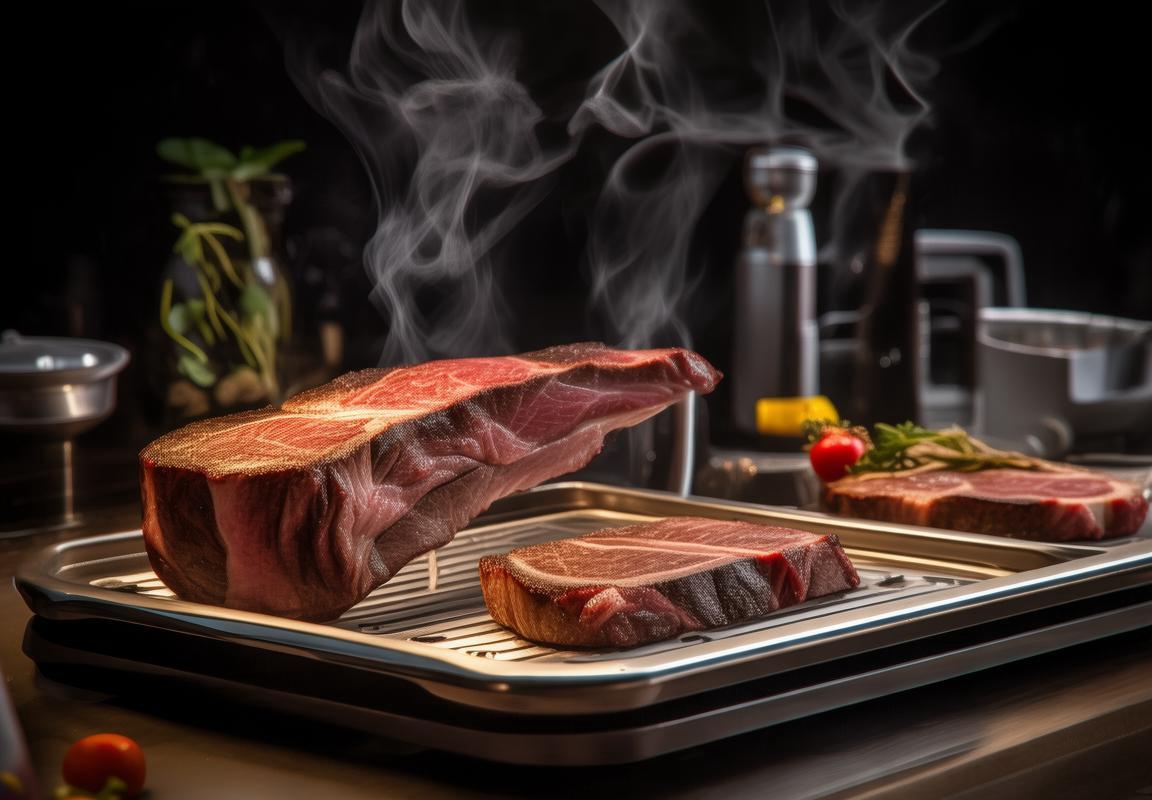
Case Studies: Successful Steak Machine Introductions in Key European Markets
In the heart of Europe, the introduction of steak machines has been a game of culinary strategy, with brands navigating through a complex tapestry of consumer tastes and market dynamics. Let’s delve into some of the key success stories that have shaped the landscape of the steak machine market in Europe.
The Italian Market’s Warm WelcomeItalian consumers have a reputation for their discerning palates, and the steak machine has found a niche in this discerning market. Brands like Breville and Thermomix have seen their steak machines embraced by Italian homes, thanks to features that cater to the country’s love for high-quality, perfectly cooked steaks. The ease of use and the ability to achieve restaurant-quality results have been major selling points.
German Efficiency Meets Steak CookingGermany, known for its engineering prowess, has warmly welcomed steak machines that embody efficiency and precision. Brands like Miele and Siemens have capitalized on this by offering steak machines that not only cook to perfection but also integrate seamlessly into modern kitchen designs. The German market’s preference for innovation and smart appliances has made steak machines a must-have for many German households.
French Flair with a Modern TwistIn France, where culinary tradition is revered, the steak machine has brought a modern twist to the classic French steak. Brands like Robam and Magimix have introduced machines that cater to the French consumer’s desire for both authenticity and convenience. The ability to replicate the iconic “bleu” or “saignant” steak has been a hit, appealing to both seasoned chefs and home cooks alike.
Scandinavian Simplicity and Steak CookingScandinavian design is all about simplicity and functionality, and this aesthetic has been perfectly captured by steak machines from brands like Smeg and Electrolux. These machines not only deliver on the culinary front but also add a touch of Scandinavian elegance to the kitchen. The focus on ease of use and energy efficiency has resonated with consumers who value sustainability and minimalism.
British Innovation in Steak TechnologyThe British market has shown a keen interest in innovation, and steak machines have been no exception. Brands like Russell Hobbs and Breville have introduced models that cater to the British consumer’s love for innovation and quality. The ability to cook a wide variety of steaks, from rare to well-done, has made these machines a staple in many British kitchens.
Spanish Passion for Steak MachinesIn Spain, where passion for food is as strong as the sun, steak machines have been a hit. Brands like Balay and Fagor have introduced models that are not only easy to use but also offer a range of cooking programs to suit different steak preferences. The Spanish market’s appreciation for a good steak, combined with the convenience of a machine, has made these devices a favorite among Spanish households.
Nordic Necessity Meets Steak CookingThe Nordic countries, with their cold climates, have found a necessity in steak machines that can provide a warm, comforting meal. Brands like AEG and Electrolux have introduced models that are not only functional but also designed to withstand the rigors of a harsh winter. The focus on durability and performance has made these machines a staple in many Nordic kitchens.
Eastern Europe’s Embrace of Steak TechnologyEastern Europe has seen a surge in the popularity of steak machines, with brands like Polaris and Zanussi leading the charge. The affordability and ease of use of these machines have made them accessible to a wider audience. The region’s growing middle class and a newfound appreciation for home cooking have contributed to the success of steak machines in Eastern Europe.
In conclusion, the successful introductions of steak machines in key European markets have been a testament to the adaptability and innovation of the appliance industry. By understanding local tastes, cultural nuances, and design preferences, brands have been able to carve out a significant niche in the competitive kitchen appliance market. As the demand for convenience and quality cooking continues to rise, the steak machine is poised to become a staple in many European kitchens, bringing the joy of perfectly cooked steaks to the masses.